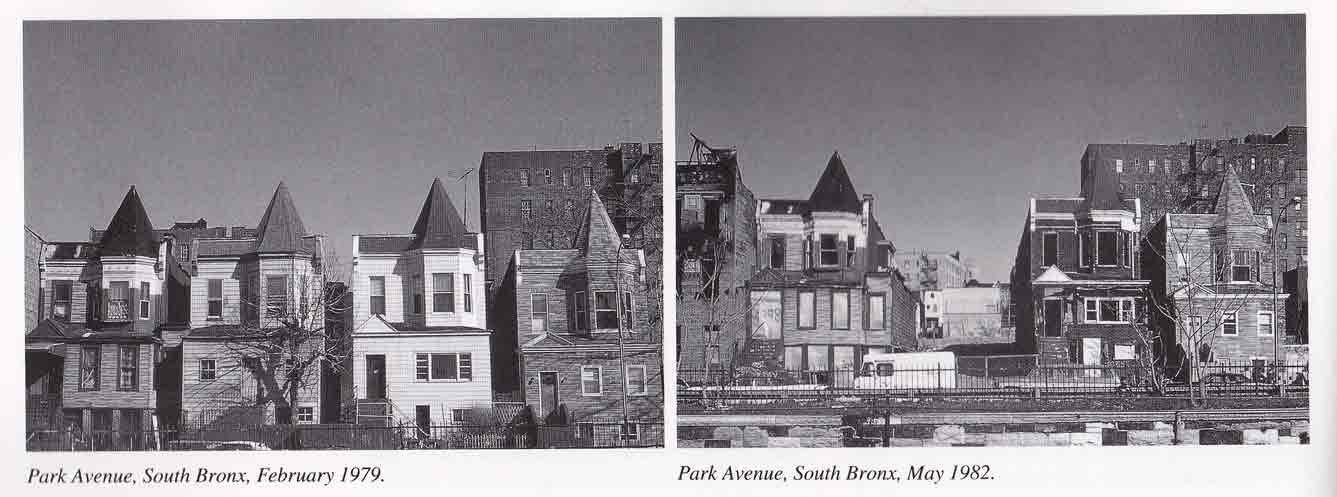
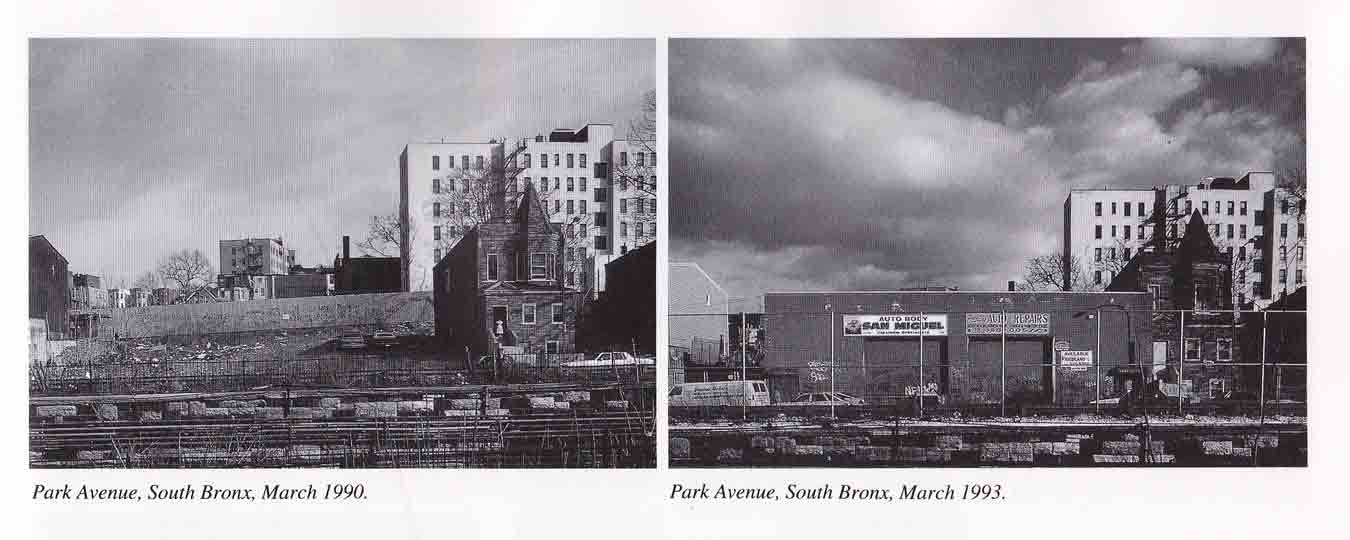
Question 8 of Homework 1
READING THE AMERICAN CITY
Katz describes "the New American City" as "readable" much like a book is readable. Katz means by this idea that one can see evidence of larger political, economic, and social phenomena in the built environment (building, parks, streets, lots, etc...) of cities. In other words, the forces that shape urban life leave behind evidence in the physical landscape that we can later "read." For Katz, the built environment are like fingerprints of these forces.
In this activity, you will "read" images of the city and connect those
images in an analytic fashion to Katz's essay.
QUESTIONS TO ANSWER FOR EACH IMAGE OR SET OF IMAGES BELOW:
A) identify the phenomenon described by Katz for which the image provides evidence.
B) In 2 - 3 sentences, describe the cause and consequence of the phenomenon.
C) Describe how the image records evidence of the phenomenon (in essence, this is a warrant).
REMEMBER: YOU ARE NOT ANSWERING THE "HINT" QUESTIONS BELOW; INSTEAD, YOU ARE USING THOSE HINT QUSTIONS TO ANSWER THE A-C ABOVE FOR EACH IMAGE OR IMAGE/CLUSTER
INCLUDE YOUR WRITE UP FOR EACH IMAGE OR IMAGE CLUSTER IN YOUR HOMEWORK FOR THIS WEEK THAT YOU WILL SUBMIT VIA BLACKBOARD. NOTE ALSO THE EXTRA-CREDIT PORTION AT THE END.
HINTS: Look closely at each image or cluster of images, paying close attention to the details in both the background and the foreground. Look closely for what's there and then what should or might be there that's not there. Then, think about Katz's chapter. My hints below will help point you in the right direction; you don't need to answer the questions contained in the hints in your homework, but coming up with the answers to those questions will help you respond to the "Question to Answer" above.
IMAGE
CLUSTER 1
A) identify the phenomenon described by Katz for which the image provides evidence.
B) In 2 - 3 sentences, describe the cause and consequence of the phenomenon.
C) Describe how the image records evidence of the phenomenon (in essence, this is a warrant).
hints (you do not need to answer these question in your response):
What changes are visible in these images from the same location in the South
Bronx from 1979 - 1993? What SPECIFIC process does Katz describe
that would cause these change and WHY? Are the buildings in the later images of stable residential neighborhoods? Are the businesses represented in the photos part of the new, dynamic economy that Katz describes or more marginal businesses?
THE TRACKS THAT APPEAR
IN THE LATER THREE IMAGES WERE THERE IN 1979--THEY JUST DON'T APPEAR IN THE
PHOTOGRAPH, SO THEIR ABSENCE IN THE 1979 PHOTO IS NOT EVIDENCE OF ANYTHING.


IMAGE 2
A) identify the phenomenon described by Katz for which the image provides evidence.
B) In 2 - 3 sentences, describe the cause and consequence of the phenomenon.
C) Describe how the image records evidence of the phenomenon (in essence, this is a warrant).
hints (you do not need to answer these question in your response):
Katz describes a variety of different types of ghettos: "the immigrant ghetto," "the institutional ghetto," etc . . . Which of those types of ghetto does this image seem to represent (use Katz's typology and his phrase in your answer)? What process described by Katz is at work here?
Harlem, 1989
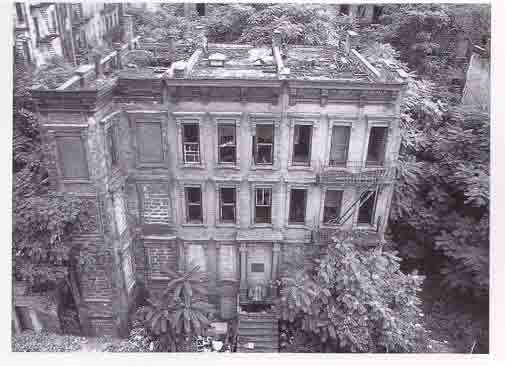
IMAGE 3
A) identify the phenomenon described by Katz for which the image provides evidence.
B) In 2 - 3 sentences, describe the cause and consequence of the phenomenon.
C) Describe how the image records evidence of the phenomenon (in essence, this is a warrant).
hints (you do not need to answer these question in your response):
Look closely at all of the types of structures in the foreground. What different function might they have once have? What function do they now have? What's not there? What's in the middle background? In the far background? What sort of activity or policy produced the structures in the middle ground and background? What is the relationship between the activities (or lack of activities) in the foreground, middle ground, and background? What larger force or trend, according to Katz, shaped these various activities and their relationships?
Bedford-Stuyvesant, Brooklyn, 1989
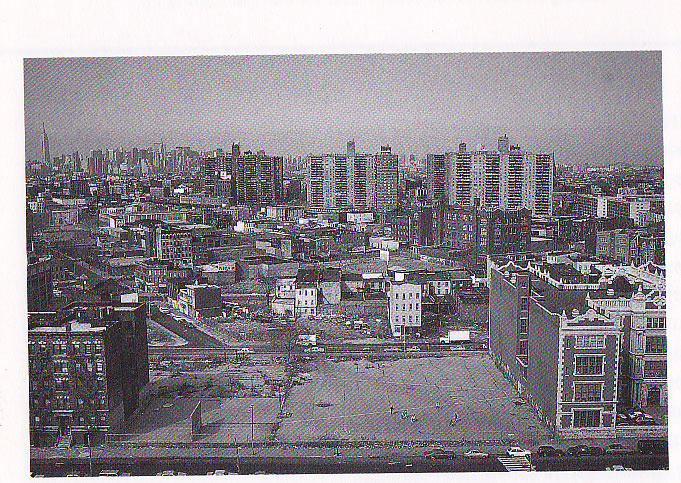
HERE'S SOME HELP IDENTIFYING BACKGROUND, MIDDLEGROUND, AND FOREGROUND IN THIS IMAGE
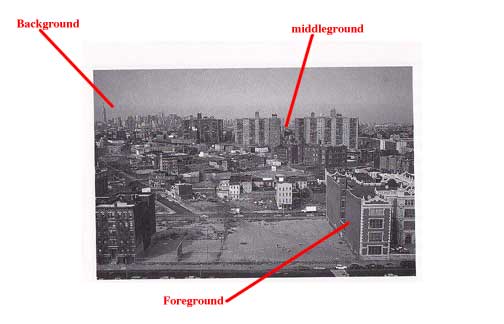
IMAGE CLUSTER 4
A) identify the phenomenon described by Katz for which the image provides evidence.
B) In 2 - 3 sentences, describe the cause and consequence of the phenomenon.
C) Describe how the image records evidence of the phenomenon (in essence, this is a warrant).
hints (you do not need to answer these question in your response):
Again, what type of ghetto (see image 2) described
by Katz best fits these images? What process described by Katz is at work here?
Bedford-Stuyvesant, Brooklyn, 1990 and South Bronx, 1992
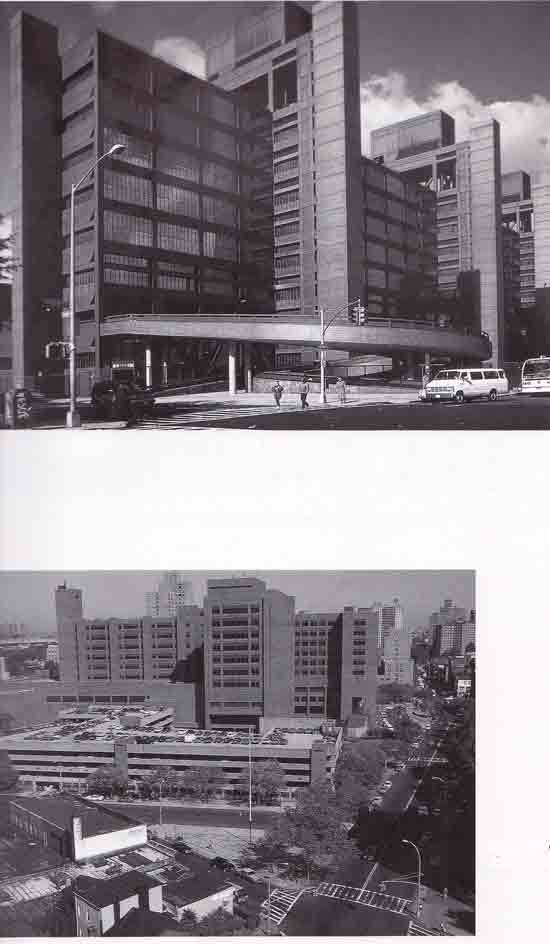
IMAGE 5
A) identify the phenomenon described by Katz for which the image provides evidence.
B) In 2 - 3 sentences, describe the cause and consequence of the phenomenon.
C) Describe how the image records evidence of the phenomenon (in essence, this is a warrant).
hints (you do not need to answer these question in your response):
What sort of building described by Katz is captured in this image? What is the
relationship between this building and its immediate environment? What process
or policy described by Katz is at work here? What might the consequences be?
South Bronx, 1980. NEW YORK CITY HOUSING AUTHORITY'S Morrisania Air Rights Houses

IMAGE 6
A) identify the phenomenon described by Katz for which the image provides evidence.
B) In 2 - 3 sentences, describe the cause and consequence of the phenomenon.
C) Describe how the image records evidence of the phenomenon (in essence, this is a warrant).
hints (you do not need to answer these question in your response):
What process or policy described by Katz is at work here?
Lawndale, Chicago, 1988
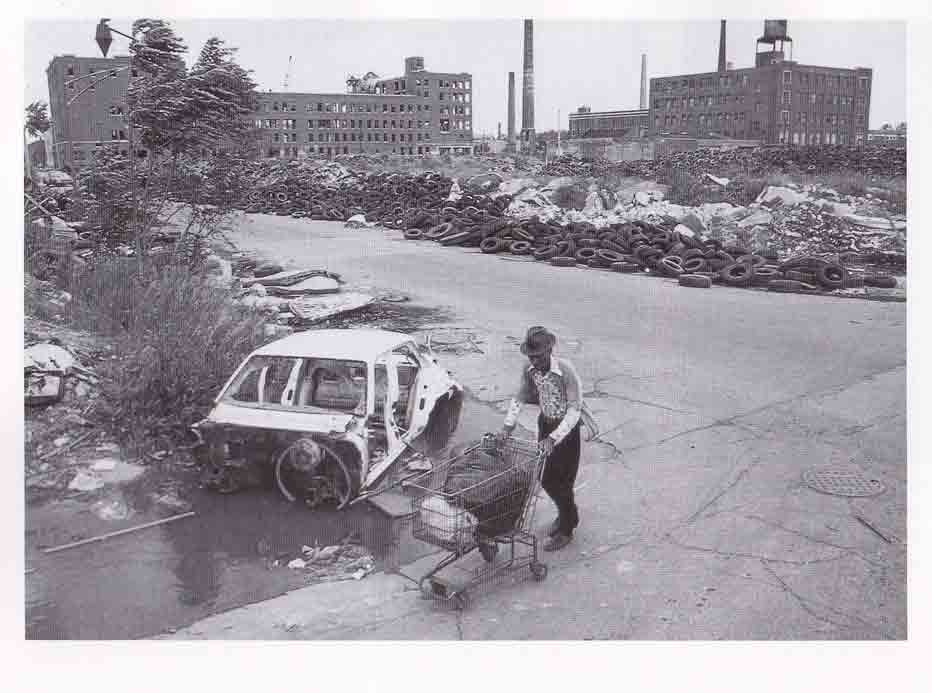
EXTRA-CREDIT (potentially an extra 15% on this assignment)
Using a photograph THAT YOU TOOK YOURSELF of a New York built environment or streetscape, carefully
describe how the details in the photographs illustrate a point made by Katz.
Be sure to include both the paragraph and the photograph in Blackboard submission.